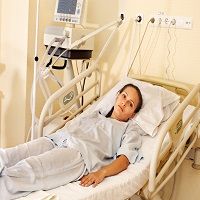Swallowing After Intubation: Food, Position and Therapy
Postextubation dysphagia is a common but often unrecognized problem in critically ill patients who've been intubated for 2 days or more. Its causes include mechanical abrasion, cognitive disturbances, and the residual effects of narcotics and anxiolytic medications.

Postextubation dysphagia (PED) is a common but often unrecognized problem in critically ill patients who’ve been intubated for 2 days or more. Its causes include mechanical abrasion, cognitive disturbances, and the residual effects of narcotics and anxiolytic medications. As the duration of intubation lengthens, the likelihood of dysphagia increases as does the probability of poor outcomes. Dysphagia can lead to aspiration pneumonia. A review article in the January 2015 issue of Baylor University Medical Center Proceedings provides an excellent overview of this problem with emphasis on recognition and management.
Risk factors associated with PED are numerous with preexisting neurological disorders, older age and longer duration of intubation major contributors. These are not modifiable, and most other risk factors are also nonmodifiable preexisting or concurrent conditions.
The authors discuss the utility of screening tools, and discuss the elements of a good tool. Such a tool would address patient history, and include observation of patients’ postextubation cognition, behavior, speech, voice quality, and swallowing.
Early extubation, small endotracheal tube size, and small nasogastric tube bore can lower PED risk.
Treatment must be individualized and must not rely solely on bedside swallow evaluations; instead, instrumental tests are now the gold standard for diagnostics. These include fiberoptic endoscopic evaluation of swallowing (FEES), ultrasonography, pH-manometry, and scintigraphy.
Treatment’s goal is to restore optimal nutrition and hydration and avoid pneumonia. Clinicians prescribe 3 approaches most often:
- Dietary texture modifications (changing food texture and quantity)
- Postural changes/ compensatory maneuvers (sitting upright or tucking chin to alter the way food passes through the gastrointestinal system)
- Therapeutic exercises and neuromuscular stimulation to improve swallow function
Studies indicate that dietary and postural interventions may have limited benefit, but they represent basic interventions and they do no harm. Speech pathologists can prescribe oralpharyngeal regimens to improve oromotor control and decrease aspiration risk. The oromotor direct therapies seem to be more effective than simpler dietary and postural interventions.